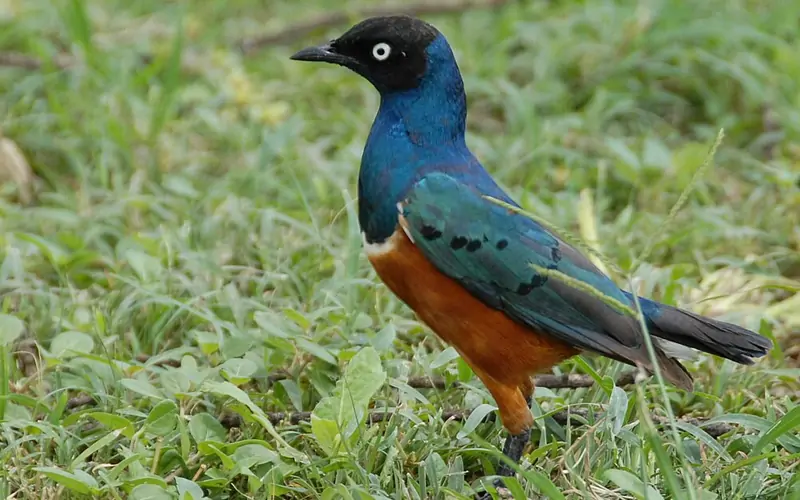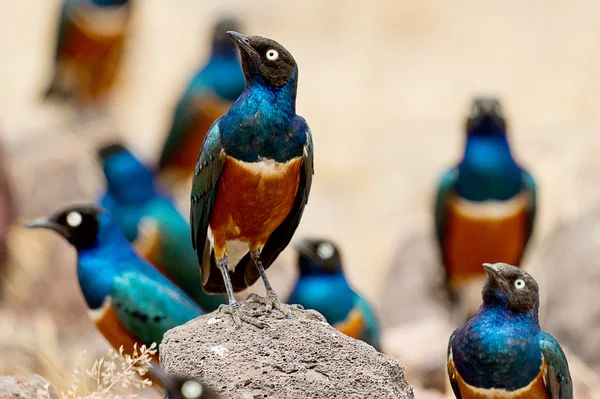In the Serengeti plains, atop a termite mound, two full-bellied cheetahs rested close together – a closeness that spoke of a bond, whether familial or forged through survival in the wild. Their posture conveyed a mix of alertness and serenity. One of them stretched and scanned the horizon, its ears twitching at the faintest sound. The intricate patterns of their spotted coats blended beautifully with the soft green backdrop of their natural habitat. This is the delicate balance of companionship and vigilance that defines life in the Serengeti savannah.
Moving on, we crossed a river. On the bank lay the carcass of a Grant’s gazelle – perhaps the leftover kill of the cheetahs we had just seen. Two black-backed jackals were feeding hurriedly on the carcass. One by one, vultures began to arrive, compelling the jackals to abandon their meal. A frenzy ensued as the vultures fought over the remains, some snatching morsels directly from each other’s beaks.
About ten metres from the bank, I caught a glimpse of two dung beetles busily rolling a ball of dung into the grasses. It was an interesting scene. Rolling dung may not sound glamorous, but for the dung beetle, it’s a way of life. They roll dung into round balls and move them to a safe place to bury. There, a female lays her eggs in the dung, providing a ready food source for the hatching larvae. In the process, they also spread seeds and nutrients throughout the landscape – nature’s recyclers. I once read that, relative to its size, the dung beetle is the strongest animal in the world. A dung beetle can bury dung 250 times heavier than its own weight in a single night.
Meanwhile, we came across two juvenile bat-eared foxes by the roadside. They were very beautiful and curious, watching us with suspicion—much like house cats expecting a meal. Bat-eared foxes feed on insects, termites, larvae and beetles. They are very timid creatures.
We then came to a quiet pathway and spotted a group of superb starlings (Lamprotornis superbus). They flew up onto a nearby peach tree while we were observing a hamerkop. The starlings perched there for about fifteen minutes, singing softly before dropping back to the ground to feed.
Superb starlings are among the most common birds in the Serengeti. They are strikingly beautiful and highly social, often seen in groups. In Maasai, they are called Engolikolo, and in Swahili, Kwenzi Maridadi. They are sexually monomorphic, making it difficult to distinguish between males and females – both are equally stunning. Around picnic sites, lodges and other public areas, they offer us a close-up glimpse of avian life. In Arusha, they are regular visitors to my home, where they serve as my natural alarm clock in the early hours of the morning.


The Serengeti is not just about the Big Five – millions of other fascinating sights await those who take the time to look.



